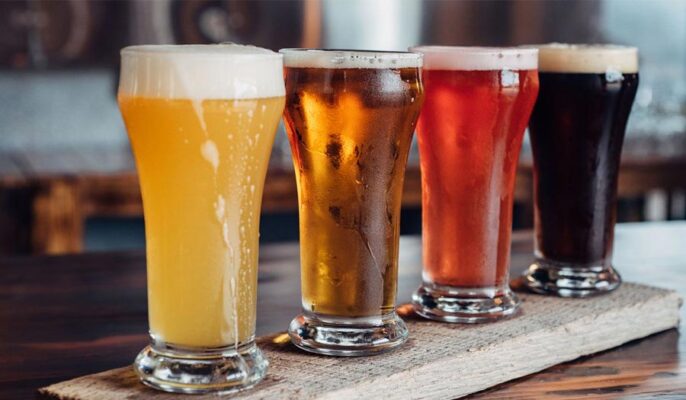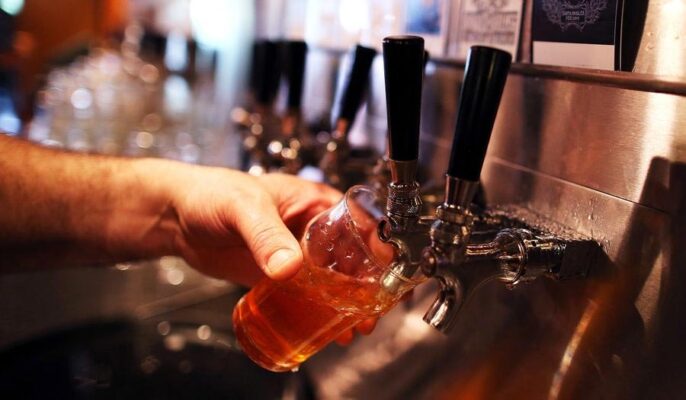Exploring how to brew beer better has been an important goal for so-called microbreweries. Although brewers face serious challenges in a competitive industry, working in the brewing industry can be a lot of fun. Many brewers believe that quality is one area where they can transcend the ordinary and deliver extraordinary products. Beer quality, consistency, and innovation are always decisive factors in the successful operation of any brewery. They are bound to contribute to a brewery’s success, but how should this be achieved? Next, we will introduce how to improve the quality and consistency of beer.
Start with a good recipe
This may sound like a no-brainer, but it’s crucial to do some homework ahead of time to ensure you have a good starting point for your beer. I’ll go over some resources available to you to help you build a solid foundation. Brewing recipe design is a fascinating blend of art and science. While some brewers use scientific methods to try to match grain percentage, specific gravity, color and bitterness, this is only part of the brewing process. Another part is understanding the flavors produced by each ingredient and how those flavors interact in complex ways and determine the characteristics of the finished beer. You need to master the art and science of brewing to produce the best beer possible.

Researching brewing recipes is another great way to develop a recipe. You can search for examples of the style you need in books, magazines, websites or online recipe databases. Today, the challenge in developing new formulas is no longer a lack of formula data, but rather sorting through the large number of available formulas. You can select recipes like your target style and analyze each brew recipe:
- What basic grains are used in each?
- What specialized malts are used?
- What is the ratio of each pill?
- What hops and yeast varieties did you choose?
Consistency of the Brewing Process
Brewing consistency is very important, especially if you are looking to improve on a before brewed recipe. Keep good records of each brew, measure simple data like volume, gravity and temperature, and compare different batches of the same recipe. Once you have a solid starting brewing recipe, the next step is to brew it. The goal here is not to complete the brewing recipe in one go, but to use your best techniques to brew it and analyze it, and make improvements when the beer isn’t quite what you want it to be.
Large commercial breweries have quality control departments. They are responsible for monitoring all aspects of the brewing process, looking for subtle changes that could affect the ingredients, process, or results of the finished beer. Of course, these large breweries will give priority to using pilot beer equipment for testing before large-scale brewing to control risks within a controllable range.
Consistent ingredients
A consistent brewing process starts with consistent ingredients. For the homebrewer, this is a great starting point for purchasing a fork. Commercial brewers test beer ingredients and record:
- Are the cereals fresh?
- Are the grains crushed ?
- Does the cereal smell and taste as expected?
- Do hops have a strange smell?
- Are the hops showing signs of discoloration or moisture?
- What type of yeast is used?
Judgment and identification of defects
Even experienced professional brewers rely on sensory evaluation or “tasting” to assess beer quality. If you want your beer to get better, developing the critical ability to judge and test beer is crucial. The best brewers are often the best judges of beer, so it’s important to develop the ability to recognize off-flavors.
Beer has two major flaws. The first is “imbalance,” which is a mismatch in beer flavor, carbonation, color, or other aspects. This can usually be solved by changing the formula or making other changes. The second pin is “Odor” and covers the classic odors identified on the BJCP score sheet. These are terms you should be familiar with as they are used in beer competitions to identify certain flavors and flaws.

Beer imbalance
An imbalance in a beer is when something in the recipe or process causes the beer to be “not quite right.” For example, you might want to drink a light beer, but the beer is too dark. Your Big IPA may have fermented too well and is now closer to a Double IPA. You may taste a nice, balanced beer flavor, but the beer tastes flat and lacks carbonation. The advantage of this imbalance is that it is easy to correct.
Flavor imbalances are a little more complicated to identify and correct. Obvious flaws like a beer that’s too bitter or too malty are easy to correct, but issues like wrong malt selection, too many specialty malts, using the wrong hops or yeast varieties, and similar issues can be harder to pinpoint. While the beer may taste bland or plain wrong, it can be difficult to figure out which ingredient is causing the problem. That’s why, as mentioned before, it’s important to know each ingredient.
Correct your beer and brew again
Being able to brew, measure, track, and taste your beer is important, but only if you can identify the root cause of the off-flavor or imbalance and correct your recipe or process to brew again.




